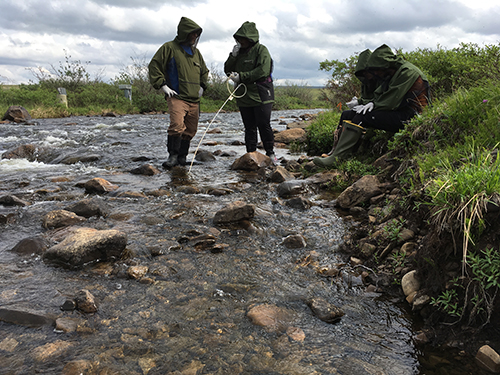 Collecting the water from the hyporheic sipper in Toolik Outlet. Photo by DJ Kast
The why
Collecting the water from the hyporheic sipper in Toolik Outlet. Photo by DJ Kast
The why
Today we trained on how to execute stream surveys in the field. The Arctic researchers want to see where the aquatic microbe community comes from and where it travels to.
Research Questions!
- What are the sources of bacteria to streams?
- Do these sources vary with the seasons or the amount of rainfall?
- What bacteria are carried by streams to other locations on the landscape?
Dr. Byron Crump, Jason Dobkowski, Johanna Albrigtsen, and Graham Stewart went to Toolik outlet to train on how to do the upcoming stream surveys. Stream surveys consists of installing a hyporheic zipper into the river and collecting hyporheic water, collecting soil water, soil samples, sediment samples, and rock scrubs.
Hyporheic Zone Water Sampling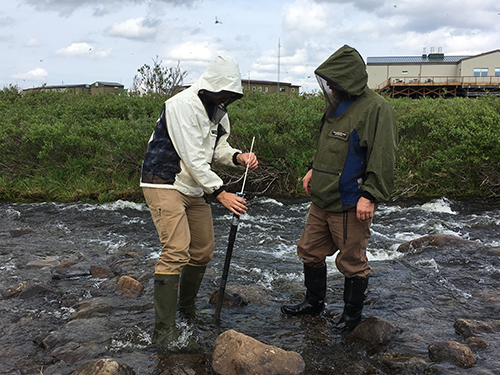 Installing the hyporheic zipper into Toolik inlet. Photo by DJ Kast
Installing the hyporheic zipper into Toolik inlet. Photo by DJ Kast
The hyporheic zone means below flow water and its the water underneath a stream bed, where there is mixing of shallow groundwater and surface water.
Soil Water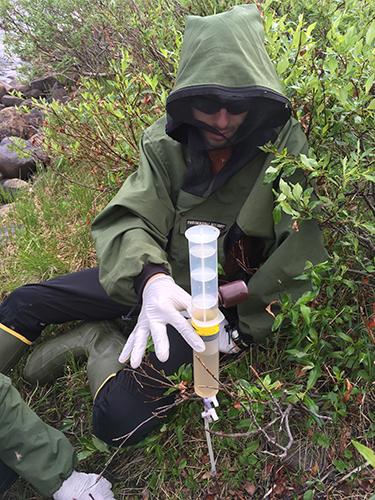 Graham Steward collecting soil water samples. Photo by DJ Kast
Graham Steward collecting soil water samples. Photo by DJ Kast
Soil water is collected by using a metal probe and syringe that is put into the ground.
Soil Sample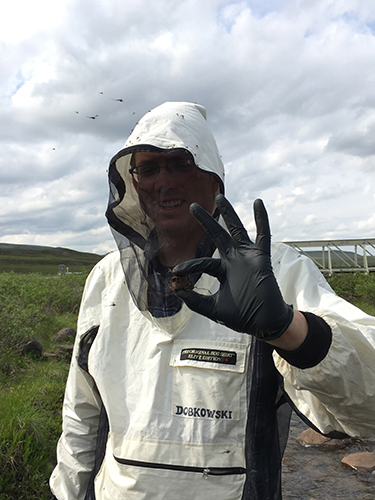 Jason Dobkowski with soil sample. Photo by DJ Kast
Jason Dobkowski with soil sample. Photo by DJ Kast
Literally picking up a piece of soil and placing it into a sample bag.
Sediment Core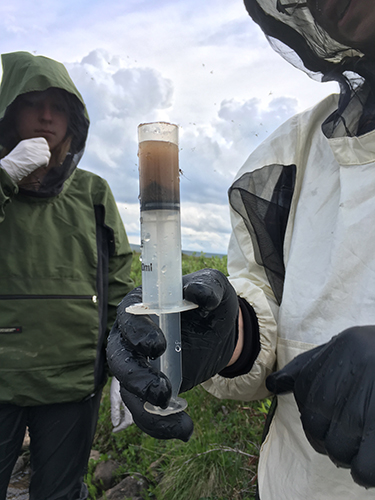 Sediment core from the Toolik inlet. Photo by DJ Kast
Sediment core from the Toolik inlet. Photo by DJ Kast
Using a coring apparatus to get sediment out of the bottom of the stream.
Rock Scrubs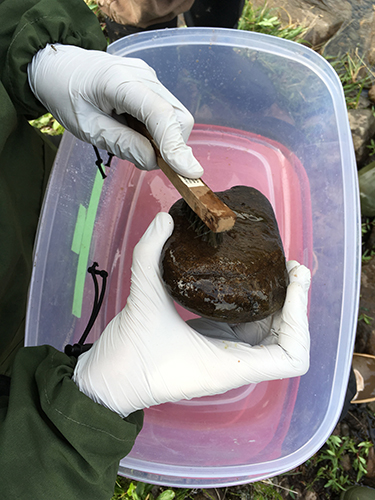 Johanne A scrubbing the rocks for microbiomes. Photo by DJ Kast
Johanne A scrubbing the rocks for microbiomes. Photo by DJ Kast
Looking to see where bacteria live in the stream. Seeing what microbial matts live on the bottom and top of the rocks.
USC Young Scientists Program (YSP) Flag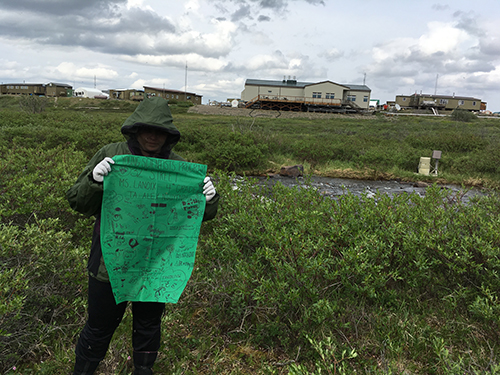 The polar flag from the 4th graders in Ms. Laniox's class at 32nd St school. Photo by DJ Kast
The polar flag from the 4th graders in Ms. Laniox's class at 32nd St school. Photo by DJ Kast
